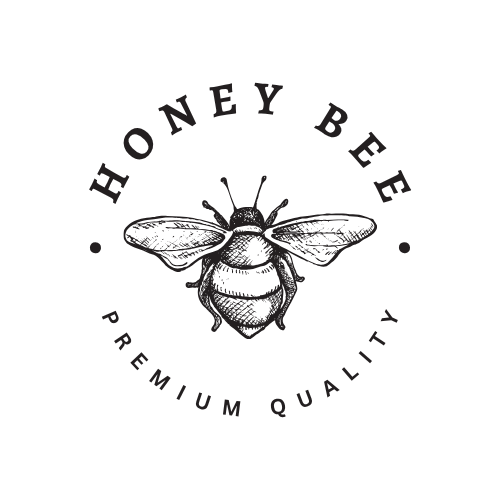November 19, 2025
Proper maintenance of exhaust extraction systems is essential for ensuring safe, efficient, and long-lasting operation. These systems, commonly found in automotive repair shops, manufacturing plants, and facilities that handle heavy-duty vehicles, are designed to remove harmful fumes, dust, and particulate matter from the workspace. Neglecting routine upkeep can lead to reduced system efficiency, higher operational costs, and potential health hazards for workers exposed to airborne pollutants. In this article, we’ll explore practical maintenance tips to keep your exhaust extraction system running smoothly and efficiently. Regular attention to these systems not only protects employee health but also contributes to a cleaner, more compliant, and sustainable work environment.
Inspect and Clean Filters Regularly
Filters are the heart of any exhaust extraction system. They capture harmful emissions, dust, and particulate matter before they can escape into the work environment. Over time, these filters accumulate debris, which can significantly reduce airflow and compromise the system’s ability to perform effectively.
To maintain optimal performance, schedule routine inspections of all filters. Check for signs of clogging, tears, or other damage. In high-usage environments, such as heavy-duty vehicle service bays, filters may need cleaning or replacement more frequently. A common best practice is to establish a filter maintenance schedule, documenting when each filter is inspected, cleaned, or replaced. This not only ensures consistent system performance but also helps identify patterns that may indicate other underlying problems.
Cleaning filters is not always a one-size-fits-all task. Depending on the type of filter — HEPA, carbon, or mesh — different cleaning methods may be required. Some filters can be washed and dried, while others may need full replacement. Always follow manufacturer recommendations to avoid compromising the system.
Check and Maintain Ductwork Integrity
Ductwork is the backbone of an exhaust extraction system, channeling harmful fumes safely away from work areas. Even small leaks, cracks, or loose connections in the duct system can reduce airflow and decrease system efficiency. In addition, compromised ductwork may allow hazardous fumes to escape, creating a dangerous environment for employees.
Routine visual inspections are critical. Check for rust, holes, and loose joints. In industrial settings, ductwork may also be exposed to heat, vibration, or corrosive chemicals, all of which can accelerate wear and tear. It is essential to replace or repair damaged sections promptly. Sealing joints with high-quality duct tape or specialized sealants can also help prevent leaks and maintain consistent airflow.
Another effective practice is to periodically clean the ductwork from the inside. Over time, grease, dust, or particulate matter can accumulate on interior surfaces, reducing airflow and increasing the risk of system failure. Professional duct cleaning services can help maintain cleanliness and efficiency, particularly in facilities with high emission levels.
Ensure Proper Fan Operation
The fan is a critical component in any exhaust extraction system, driving airflow through filters and ducts. A malfunctioning or inefficient fan can compromise the system’s ability to remove pollutants, directly impacting workplace safety.
Regular maintenance of fans involves inspecting blades for buildup, cracks, or wear. Ensure that the motor and bearings are adequately lubricated and that electrical connections are secure. Monitoring fan performance is also important — this can include measuring airflow rates or pressure to ensure the fan is operating within its designed parameters.
For systems handling heavy-duty vehicle emissions, a fan that underperforms can allow particulate matter to linger in the air, creating long-term health risks for employees. Timely maintenance, including professional calibration or fan replacement when needed, can prevent costly downtime and ensure continuous protection.
Monitor Emissions and Comply With Standards
Compliance with emission standards is an essential aspect of maintaining an exhaust extraction system. Regulatory requirements are constantly evolving, particularly in industries involving heavy-duty vehicles. According to Ecology, new heavy-duty vehicle tailpipe emission standards, when fully implemented in certain regions, are expected to reduce particulate (PM) emissions by approximately 60% compared to earlier standards. Maintaining a properly functioning extraction system ensures that these reduced emissions are safely captured before they can enter the workplace or the surrounding environment.
Regular emissions monitoring is a proactive approach to maintaining system effectiveness. This can involve using sensors to detect pollutant levels or periodic professional inspections to verify system performance. Calibration of the extraction system may also be required to ensure it continues to meet regulatory standards. Consistently monitoring emissions not only supports compliance but also demonstrates a commitment to environmental responsibility and worker safety. It also allows facilities to identify potential issues early, preventing costly repairs and minimizing disruptions to operations.
Schedule Professional Servicing and Upgrades
While routine inspections and maintenance are essential, professional servicing plays a critical role in prolonging the life of an exhaust extraction system. Certified technicians can perform detailed diagnostics, identify hidden issues, and recommend system upgrades to improve efficiency and safety. Regular professional servicing also ensures that all components operate at peak performance and can prevent costly breakdowns before they occur.
Upgrades can include installing higher-capacity fans, more efficient filters, or modern control systems with automated monitoring. These improvements can enhance airflow, reduce energy consumption, and minimize downtime. Regular professional servicing also provides peace of mind, knowing that your system is functioning at peak performance.
For heavy-use facilities, scheduling professional maintenance at least once or twice a year is ideal. Facilities with extremely high emission levels may require more frequent professional inspections. Keeping detailed records of maintenance and servicing ensures that the system remains in top condition and provides a clear history for regulatory inspections. Maintaining thorough documentation also helps track performance trends, plan future upgrades, and demonstrate a proactive approach to workplace safety and compliance.
Implement Routine Cleaning and Workspace Practices
In addition to direct system maintenance, the surrounding workspace plays a significant role in overall system efficiency. Dust, debris, and other contaminants can accumulate near intake points, reducing airflow and potentially overloading filters. Regular cleaning of the work environment, including floors, workbenches, and nearby equipment, helps ensure consistent performance and a safer workplace.
Implementing best practices for emissions management — such as keeping vehicles or machinery well-maintained and minimizing unnecessary idling — can also reduce the burden on exhaust extraction systems. Simple practices, combined with regular system maintenance, create a safer and healthier work environment. These proactive steps not only improve air quality but also enhance overall operational efficiency and equipment longevity.
Train Staff on Proper System Use
Even the most advanced extraction systems cannot function optimally without proper user practices. Training staff on correct usage — such as positioning vehicles or equipment near intake points, avoiding obstructions to airflow, and promptly reporting any irregularities — is essential for maintaining efficiency and safety. When employees understand the impact of their actions on system performance, they are far more likely to follow protocols consistently and responsibly.
Providing periodic refresher courses, hands-on demonstrations, and creating clear visual reminders near system controls can reinforce proper usage habits. Encouraging a culture of accountability, where staff feel empowered to report issues and suggest improvements, also enhances overall system performance. In addition, recognizing and rewarding teams for adherence to best practices can motivate consistent compliance and foster a sense of ownership. Engaged and informed staff contribute significantly to the longevity and effectiveness of your extraction system, reduce downtime, and help maintain a safer, healthier workplace.
Enhance the reliability of your operations by investing in systems built to perform under pressure. Our team is committed to helping you maintain smooth, uninterrupted workflows with solutions tailored to your facility’s needs. Boost the efficiency and safety of your facility today — contact Harvey Industries, Inc for expert solutions and professional system maintenance!





